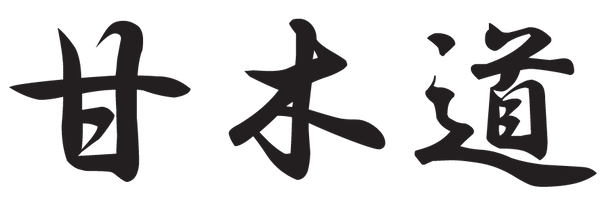Theory of Art Creation 2: "Kyoto Ceramics (First Generation Miyagawa Kosai)"
Share
If one were to discuss the general history of Kyoto pottery, one must start from the period before Kyo-yaki. This is due to the fact that Kyoto was the most populous capital in the Heian, Kamakura, and Muromachi periods, and was the center of politics, economy, and industry. However, in this paper, I would like to rediscover the charm of Makuzu Chozo, who is full of the Kyoto-ness , by introducing some of the Kyo-yaki artists from the end of the Edo period.
With the full-scale production of ceramic products based in Kiyomizu-Gojozaka, two mainstream Kyo-yaki products were formed: overglazed ceramics and porcelain. In other words, the Awataguchi kiln, which mainly produced overglazed ceramics, and the Kiyomizu-Gojozaka kiln, which was also capable of producing emerging porcelain, came to dominate. Then, during the Bunsei era (1818-1830), Kiyomizu-Gojozaka, taking advantage of the economic power it had gained from porcelain production, began to expand into the field of high-quality overglazed ceramics, which had previously been monopolized by the Awataguchi potters.
In 1823, the Gojozaka potter bought up all the Okazaki clay used by the Awataguchi pottery family, sparking the "conflict between the Awataguchi and Gojozaka pottery families." This was followed the following year by a lawsuit filed by the Awataguchi pottery family with the Kyomachibugyosho (magistrate's office) against the Gojozaka family for the prohibition of the production of "Awata-yaki-like" overglaze pottery. This was seen as a competitive conflict that accompanied these new trends in Kyo ware in the late Edo period, but the movement to preserve the traditions of the Awataguchi pottery family was ultimately limited to the decision of the magistrate's office to burn the "Awata" mark onto their products to distinguish them from Gojozaka products. However, in December of the following year, the Awataguchi kiln was forced to allow the production of high-quality overglaze pottery at the Gojozaka kiln ("Kurita Gojozaka Ichinen," private collection).
The potters who led the golden age of Kyoto ware after Ninsei, Kenzan, and Eisen were able to flourish because of the atmosphere in which tradition and the emerging Kyoto ware were so closely integrated. Among them, Aoki Mokubei, Kinkodō Kamesuke, and Ninnami Donyū, master craftsmen who inherited Eisen's new style, are highly regarded among Eisen's disciples. Around Mokubei, Okada Kyuta, who gained fame as a potter's wheel master, Makuzu Chozo, who established a family that copied Ninsei's works, and Ogata Shuhei and Seifu Yohei of the Gojozaka pottery family were active, as well as Eiraku Hozen, a tea ware maker, and his son Wazen, all of whom were highly acclaimed master craftsmen.

Peony small bowl by Kenzan

Nanjing cross-toed copy peony pattern food basket
Now, let's talk about Makatsu Chozo. Among the master craftsmen around Mokubei, we must not forget Okada Kyuta, who served as Mokubei's potter's wheel-thrower, and Akasagi Kosai (1819-1865), who assisted Mokubei in making pottery together with Kyuta. Chozo's real name was Chozaburo and Enjuken, and he was the son of the ninth generation Chobei, a Raku ware potter whose ancestor was Miyagawa Chokansai. In his later years, he studied under Mokubei and ran a pottery business in Gion Makatsuhara, after which he took the surname Makatsu and called himself Makatsu Chozo. He was also bestowed the title Kozan by the head priest of Chion-in Temple, Kachonomiya Palace. Chozo's son, Miyagawa Kozan, who founded Makuzu ware in Yokohama, described the relationship between the three men as follows: "Mokubei could calligraph and paint, but unfortunately he couldn't use a potter's wheel, so a master potter in Sanjo called Hisata did the work, and my father, Chozo, did all the fine work" (Oka Ochiba, "Visiting Miyagawa Kozan," Bijutsu Shimpo, 1911). Chozo followed Mokubei's example and produced blue and white porcelain, but after Mokubei's death, he specialized in producing pottery with Ninsei copies, refined rust-painted and colored tea utensils , and made a name for himself as a family.
Many of the works of the first Kosai were copies of Chinese porcelain, such as blue and white porcelain and blue and white porcelain, and he also made many Sencha tea utensils for the literati hobby that was popular at the time. The painting is characterized by strong lines and thick gosu. Many of the pieces have inscriptions such as "Kosai Seisaku", "Rakuto Tou Kosai Seisaku" and "Made by Dai Nippon Kosai". There are many pieces with inscriptions such as "Dai Nippon XX" from the end of the Edo period to the Meiji period, and this is because they were made with the intention of making works for overseas markets. They were modeled after Chinese inscriptions such as "Made in the Chenghua era of the Great Ming Dynasty" and "Made in the Qianlong era of the Great Qing Dynasty". Many of his works, such as large vases and ceramic boxes, are also found overseas, and many of them are in the collection and on display at the Scottish National Gallery (UK).

Auspicious Cup

Blue orchid flower pot
